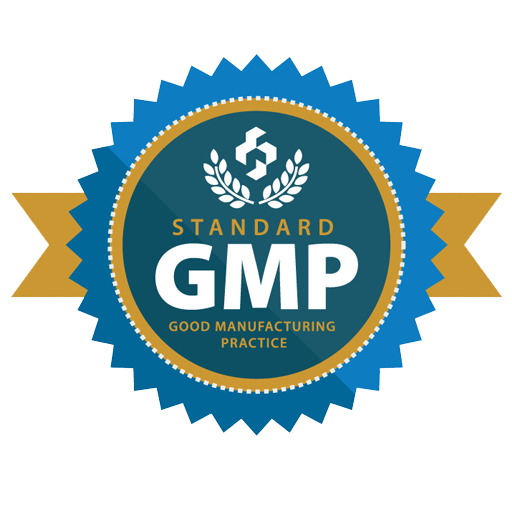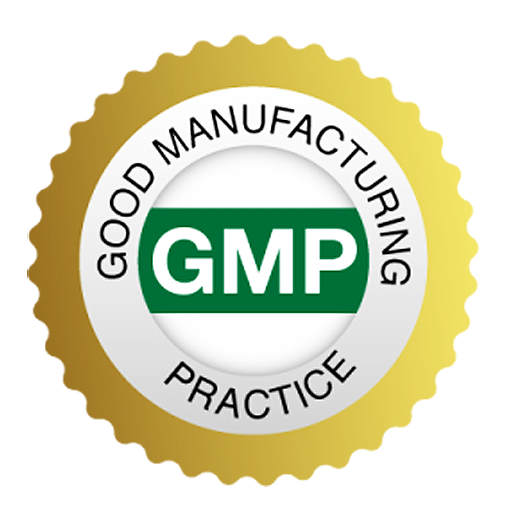Melanoma
What is Melanoma?
The most dangerous form of skin cancer, these cancerous growths develop when unrepaired DNA damage to skin cells (most often caused by ultraviolet radiation from sunshine or tanning beds) triggers mutations (genetic defects) that lead the skin cells to multiply rapidly and form malignant tumors. These tumors originate in the pigment-producing melanocytes in the basal layer of the epidermis. Melanomas often resemble moles; some develop from moles. The majority of melanomas are black or brown, but they can also be skin-colored, pink, red, purple, blue or white. Melanoma is caused mainly by intense, occasional UV exposure (frequently leading to sunburn), especially in those who are genetically predisposed to the disease.
An estimated 192,310 cases of melanoma will be diagnosed in the U.S. in 2019. Of those, 95,830 cases will be in situ (noninvasive), confined to the epidermis (the top layer of skin), and 69,480 cases will be invasive, penetrating the epidermis into the skin’s second layer (the dermis).
If melanoma is recognized and treated early, it is almost always curable, but if it is not, the cancer can advance and spread to other parts of the body, where it becomes hard to treat and can be fatal. While it is not the most common of the skin cancers, it causes the most deaths. An estimated 7,230 people will die of melanoma in 2019. Of those, 4,740 will be men and 2,490 will be women.
Melanoma Prevention Guidelines
Since its inception in 1979, The Skin Cancer Foundation has always recommended using a sunscreen with an SPF 15 or higher as one important part of a complete sun protection regimen. Sunscreen alone is not enough, however. Read our full list of skin cancer prevention tips.
Seek the shade, especially between 10 AM and 4 PM.
Don't get sunburned.
Avoid tanning and never use UV tanning beds.
Cover up with clothing, including a broad-brimmed hat and UV-blocking sunglasses.
Use a broad spectrum (UVA/UVB) sunscreen with an SPF of 15 or higher every day. For extended outdoor activity, use a water-resistant, broad spectrum (UVA/UVB) sunscreen with an SPF of 30 or higher.
Apply 1 ounce (2 tablespoons) of sunscreen to your entire body 30 minutes before going outside. Reapply every two hours or after swimming or excessive sweating.
Keep newborns out of the sun. Sunscreens should be used on babies over the age of six months.
Examine your skin head-to-toe every month.
See a dermatologist at least once a year for a professional skin exam.
Melanoma Treatments
The first step in treatment is removal of the primary melanoma tumor, and the standard method of doing this is by surgical excision (cutting it out). Surgery has made great advances in the past decade, and much less tissue is removed than was customary in the past. Patients do just as well after the lesser surgery, which is easier to tolerate and produces a smaller scar.
Surgical excision is also called resection, and the borders of the entire area excised are known as the margins.
Outpatient/Office Surgery
In most cases, the surgery for early, thin melanomas can be done in the doctor’s office or as an outpatient procedure under local anesthesia. Stitches (sutures) remain in place for one to two weeks, and most patients are advised to avoid heavy exercise during this time. Scars are usually small and improve over time.
Discolorations and areas that are depressed or raised following the surgery can be concealed with cosmetics specially formulated to provide camouflage. If the melanoma is larger and requires more extensive surgery, a better cosmetic appearance can be obtained with flaps made from skin near the tumor, or with grafts of skin taken from another part of the body. For grafting, the skin is removed from areas that are normally or easily covered with clothing.
If the tumor is .8 mm or thicker, and/or is ulcerated, it is considered at increased risk of spreading (metastasizing) to the nearest lymph nodes, and a technique called sentinel node biopsy (SLNB) is generally performed to see if this has occurred. In these cases, there is now a trend towards performing sentinel node biopsy and tumor removal surgery at the same time. When the procedures are combined in this way, the patient is spared an extra visit. If the tumor is under .8 mm thick and nonulcerated, generally no SLNB needs to be done because the odds of the tumor spreading to the lymph nodes is low.
Surgical excision is also called resection, and the borders of the entire area excised are known as the margins. Surgical excision is used to treat all types of skin cancer. At its best – given an experienced surgeon and a small, well-placed tumor – it offers results that are both medically and cosmetically excellent.
The physician begins by outlining the tumor with a marking pen. A "safety margin" of healthy-looking tissue will be included, because it is not possible to determine with the naked eye how far microscopic strands of tumor may have extended. The extended line of excision is drawn, so the skin may be sewn back together.
The physician administers a local anesthetic, and then, using a scalpel, cuts along the lines that were drawn. The entire procedure takes about 30 minutes for smaller lesions.
Wounds heal rapidly, usually in a week or two. Scarring depends on many factors, including how the tumor is situated and the patient's care of the wound after the procedure.
The tissue sample will be sent to a lab, to see if any of the "safety margin" has been invaded by skin cancer. If this is the case, it is assumed that the cancer is still present, and additional surgery is required. Sometimes, Mohs micrographic surgery is a good option at this point.
Setting the Margins
In the new approach to surgery, much less of the normal skin around the tumor is removed. The margins are therefore much narrower than they were in the past. This spares significant amounts of tissue and reduces the need for postoperative cosmetic reconstructive surgery.
Most US surgeons today follow the margin guidelines recommended by the National Institutes of Health and the American Academy of Dermatology Task Force on Cutaneous Melanoma.
• When there is an in situ melanoma, the surgeon excises 0.5-1 centimeter of the normal skin surrounding the tumor and takes off the skin layers down to the fat.
• In removing an invasive melanoma that is 1 mm or less in Breslow’s thickness, the margins of surrounding skin are extended to 1 cm and the excision goes through all skin layers and down to the fascia (the layer of tissue covering the muscles).
• If the melanoma is 1.01 to 2 mm thick, a margin of 1 to 2 cm is taken.
• If the melanoma is 2.01 mm thick or greater, a margin of 2 cm is taken.
These margins all fall within the range of what is called “narrow” excision. When you consider that until recently, margins of 3 to 5 cm (wide excision) were standard, even for comparatively thin tumors, you can see how dramatically surgery has changed for the better. Physicians now know that even when melanomas have reached a thickness of 4 mm or more, increasing the margins beyond 2 cm does not increase survival.
Mohs Micrographic Surgery
In recent years, Mohs Micrographic Surgery, which many physicians consider the most effective technique for removing basal cell and squamous cell carcinomas (the two most common skin cancers), is being increasingly used as an alternative to standard excision for certain melanomas. In this technique, performed in stages, one layer of tissue is removed at a time, and as each layer is removed, its margins are studied under the microscope for the presence of cancer cells. If the margins are cancer-free, the surgery is ended.
If not, more tissue is removed, and this procedure is repeated until the margins of the final tissue examined are clear of cancer. Mohs surgery thus can eliminate the guesswork in the removal of skin cancers and pinpoint the cancer’s location when it is invisible to the naked eye.
Mohs surgery differs from other techniques since the microscopic examination of all excised tissues during the surgery eliminates the need to “estimate” how far out or deep the roots of the skin cancer go. This allows the Mohs surgeon to remove all of the cancer cells while sparing as much normal tissue as possible.
In the past, Mohs was rarely chosen for melanoma surgery for fear that some microscopic melanoma cells might be missed and end up metastasizing. In recent years, however, efforts to improve and refine the Mohs surgeon’s ability to identify melanoma cells have resulted in the development of special stains that highlight these cells. These special stains are known as immunocytochemistry or immunohistochemistry (IHC) stains and use substances that preferentially stick to pigment cells (melanocytes), where melanoma occurs, making them much easier to see with the microscope.
For example, staining excised frozen tissue sections with a melanoma antigen recognized by T cells (MART-1) effectively labels/locates the melanocytes, helping to home in on melanomas. The MART-1-stained sections are processed and evaluated for the presence of tumor in the margins; certain signs such as nests of atypical melanocytes show that the margins are positive for melanoma and that further surgery must be done. If none of these signs are present, the surgery is concluded. Thanks to such advances, more surgeons are now using the Mohs procedure with certain melanomas.
Click here for Download pdf of patient informationClick here for Download pdf of prescribing information
Our Awesome Features
Taj Pharma is one of the largest generic pharmaceutical company in India. We hold top positions in different established markets worldwide and are building a strong presence in many emerging generics markets. You can contact Taj Pharma India's business by telephone on 91 022-2637-4592, if you have an enquiry about the company, our healthcare business, or one of our medicines.
Product Summary
Bleomycin is used to treat cancer. It works by slowing or stopping the growth of cancer cells. It Used in the treatment of squamous cell cancers, melanoma, sarcoma, testicular and ovarian cancer.
About Taj Pharma
Welcome to the Taj Pharmaceuticals Limited India site. We would like to give you an overview of Taj Pharmaceuticals Limited in India: our background, organization, products, core belief and prospects.
Patient Care
Bleomycin solution for injection use, safety information, warnings and side effects, indications and usage, Interactions, dosage, patient information, adverse reactions and clinical pharmacology.
Customer Care Service
1800-222-434 or
1800-222-825.
Frequently Asked Question
This section displays common question about Bleomycin Injection.
Contact Taj Pharma
214, Bake House, Bake House Lane,
Fort, Mumbai 400001, India
Bleomycin Injection Image Gallery
Bleomycin is used to treat cancer. It works by slowing or stopping the growth of cancer cells. This medication may also be used to control the build-up of fluid around the lungs (pleural effusion) caused by tumors that have spread to the lungs.
Click here for Download pdf of patient informationClick here for Download pdf of prescribing information
Bleomycin Solution For Injection
How to use Bleomycin / Drug Interactions
Know more Bleomycin Solution for Injection
Dosing & Uses
Dosage Forms & Strengths powder for injection 15unit 30unit Squamous Cell Carcinoma 0.25-0.5 unit/kg (10 to 20 unit/m²) IV/IM/SC q1-2Weeks
Read MoreAdverse Effects
>10% Mucocutaneous toxicity including rash, erythema, hyperpigmentation, urticaria (>50%) Febrile reactions, acute (25-50%)
Read MoreWarning
Use cautioin in renal impairment Hepatic toxicity reported Use caution when administering oxygen during surgery(increases risk of pulmonary toxicity)
Read MorePharmacology
Mechanism of Action Glycopeptide antibiotic; inhibits DNA, RNA, protein synthesis in G2, M phases Pharmacokinetics Half-Life: 2 hr
Read MoreFor Free & Detailed solution: Contact our Experts 24/7
Our Partners
A dream for new world Anchored in India and committed to its traditional values of leadership with trust, the Taj Pharma Group is spreading its footprint globally through excellence and innovation.Taj Pahrma







